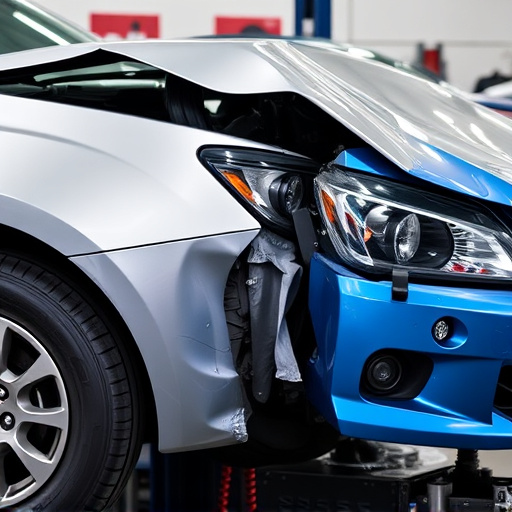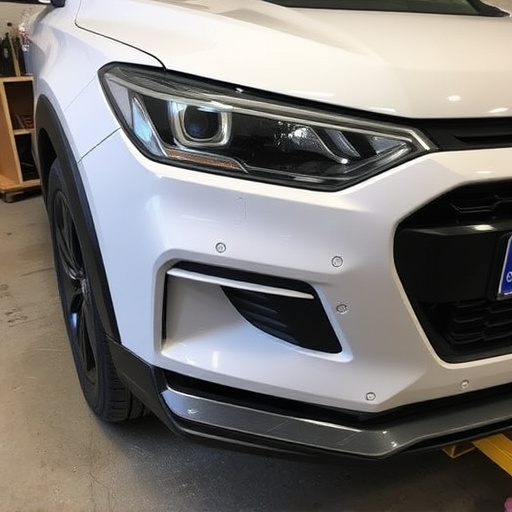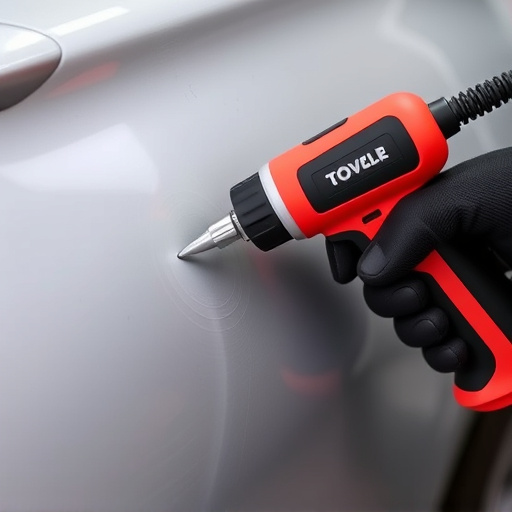Mercedes sequential turn signal reliability depends on intricate electrical systems vulnerable to weather, road debris, and wear. Common issues include frayed wires, open circuits, and bulb burnout, all resolvable through inspection and replacement. Control Module Malfunctions require checking connections, inspecting wires, and diagnostic testing; simple repairs or complex cases necessitate professional body shop intervention for effective Mercedes sequential turn signal repair, ensuring safe operation.
Mercedes owners often face a frustrating issue with their vehicle’s sequential turn signals, which can leave them confused and unsafe. This comprehensive guide addresses common reasons for failure, including electrical issues like frayed wires and open circuits, bulb burnout, and control module malfunctions. Learn practical tips for troubleshooting and repairing these problems to ensure your Mercedes’ turn signals function optimally and enhance road safety. Discover expert insights tailored for efficient Mercedes sequential turn signal repair.
- Electrical Issues: Frayed Wires and Open Circuits
- Bulb Burnout: Common Causes and Replacement Tips
- Control Module Malfunction: Troubleshooting and Repair
Electrical Issues: Frayed Wires and Open Circuits

Mercedes sequential turn signals rely heavily on intricate electrical systems to function properly. One of the most common reasons for their failure is related to electrical issues, such as frayed wires or open circuits. Over time, exposure to harsh weather conditions, road debris, and normal wear and tear can cause damage to these delicate components. Frayed wires may result in intermittent signals or complete signal loss, while open circuits can prevent the turn signals from turning on at all. Regular visual inspections of the wiring and connections under the vehicle’s hood can help catch these issues early on.
If you notice any signs of damage, corrosion, or loose connections, it’s crucial to address them promptly. A skilled mechanic or automotive body shop specializing in Mercedes sequential turn signal repair can perform a thorough diagnostic check to identify and rectify these electrical problems. This may involve replacing damaged wires, repairing or replacing faulty components, and ensuring the overall integrity of the electrical system. Proper maintenance and timely repairs are essential to keep your vehicle’s signaling system reliable and safe.
Bulb Burnout: Common Causes and Replacement Tips
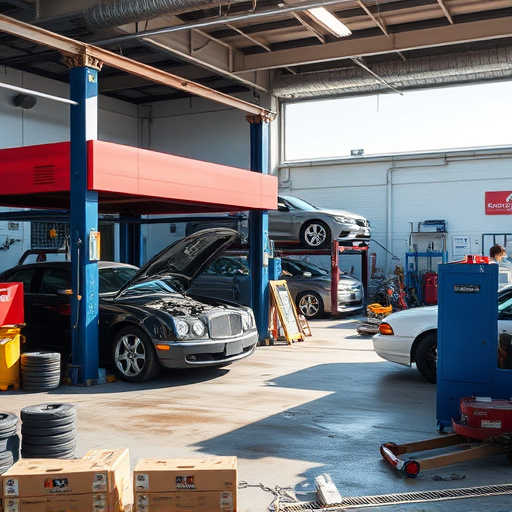
One of the most common issues with Mercedes sequential turn signals is bulb burnout. Over time, the high-intensity incandescent bulbs used in these systems can burn out, causing the turn signals to flicker or go out completely. This isn’t just an annoyance; it’s a safety hazard, especially during low-light conditions or bad weather.
Bulb burnout can be caused by several factors, including extreme temperature fluctuations, direct sunlight exposure, and age. To replace a burnt-out bulb, first locate the faulty signal lamp, typically found near the fender or door. Then, carefully unscrew the old bulb from its socket. When purchasing a replacement, opt for a high-quality bulb designed specifically for sequential turn signals. Many vehicle repair services offer expert Mercedes sequential turn signal repairs, including bulb replacement, to ensure your vehicle’s safety and reliability, preventing minor issues from escalating into more costly fender repair scenarios after a seemingly innocuous fender bender.
Control Module Malfunction: Troubleshooting and Repair
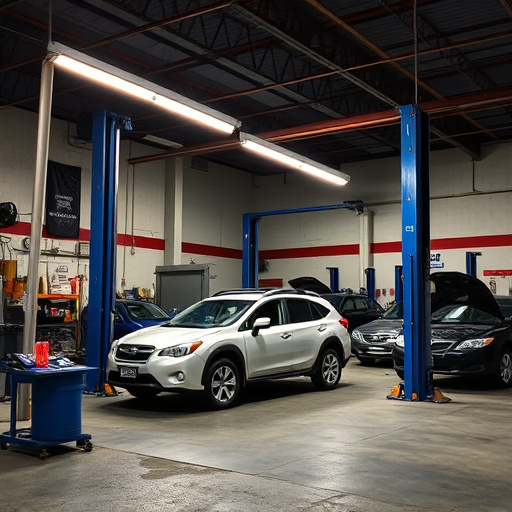
A Control Module Malfunction is a common reason behind Mercedes sequential turn signal failure. This module plays a critical role in coordinating and controlling the vehicle’s lighting system, including the turn signals. When it malfunctions, the turn signals may not function properly or sequentially as intended. Troubleshooting this issue involves checking for loose connections, inspecting for damaged wires, and testing the control module itself using advanced diagnostic tools. In many cases, a simple repair like replacing faulty components or recalibrating the module can resolve the problem.
If the issue persists, it might be necessary to visit a reputable vehicle body shop or collision repair center. Skilled technicians at these facilities are equipped with specialized equipment and expertise to diagnose and fix complex issues such as control module malfunctions. They can perform a thorough inspection of the lighting system, identify any underlying problems, and provide lasting solutions that ensure the Mercedes’ turn signals operate seamlessly and safely on the road.
Mercedes sequential turn signal failure can stem from various issues, including electrical problems like frayed wires or open circuits, bulb burnout, or control module malfunctions. Identifying and addressing these problems promptly is crucial for maintaining safety on the road. With a thorough understanding of the underlying causes, owners can effectively troubleshoot and, if needed, repair their Mercedes’ sequential turn signals, ensuring optimal vehicle performance and reliability. For those seeking more in-depth guidance, exploring dedicated resources or consulting with automotive professionals specializing in Mercedes repairs can be beneficial.


